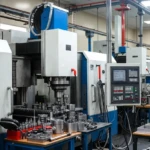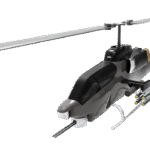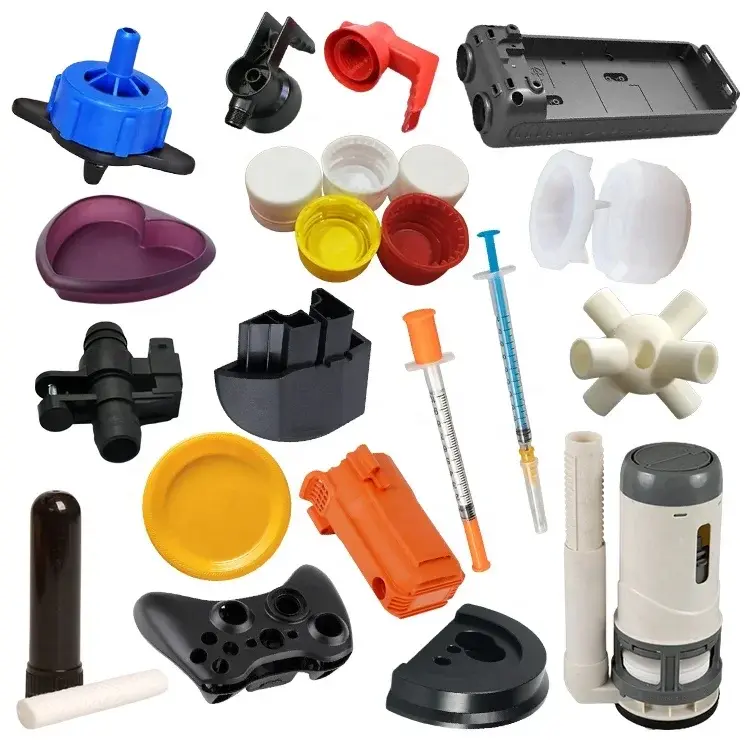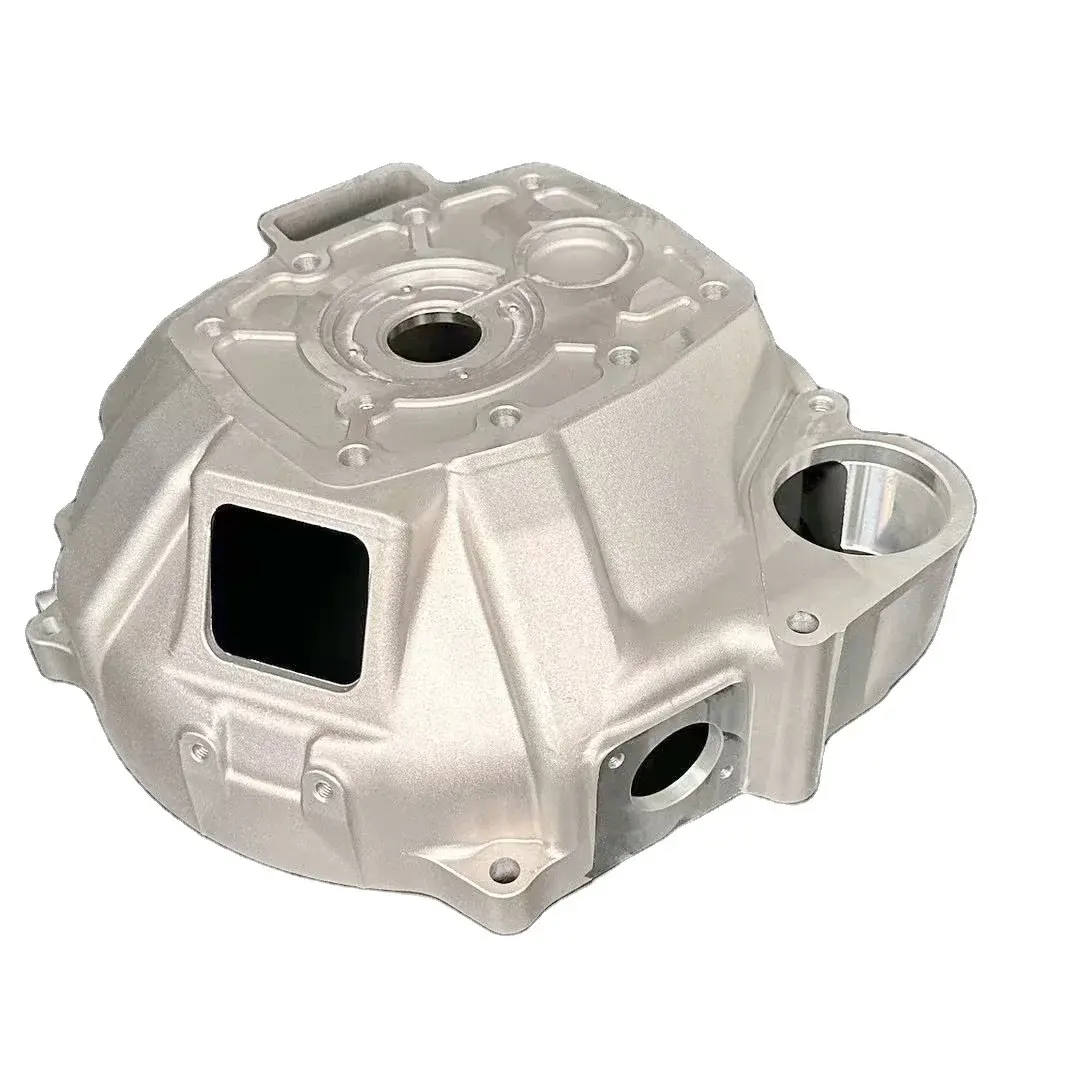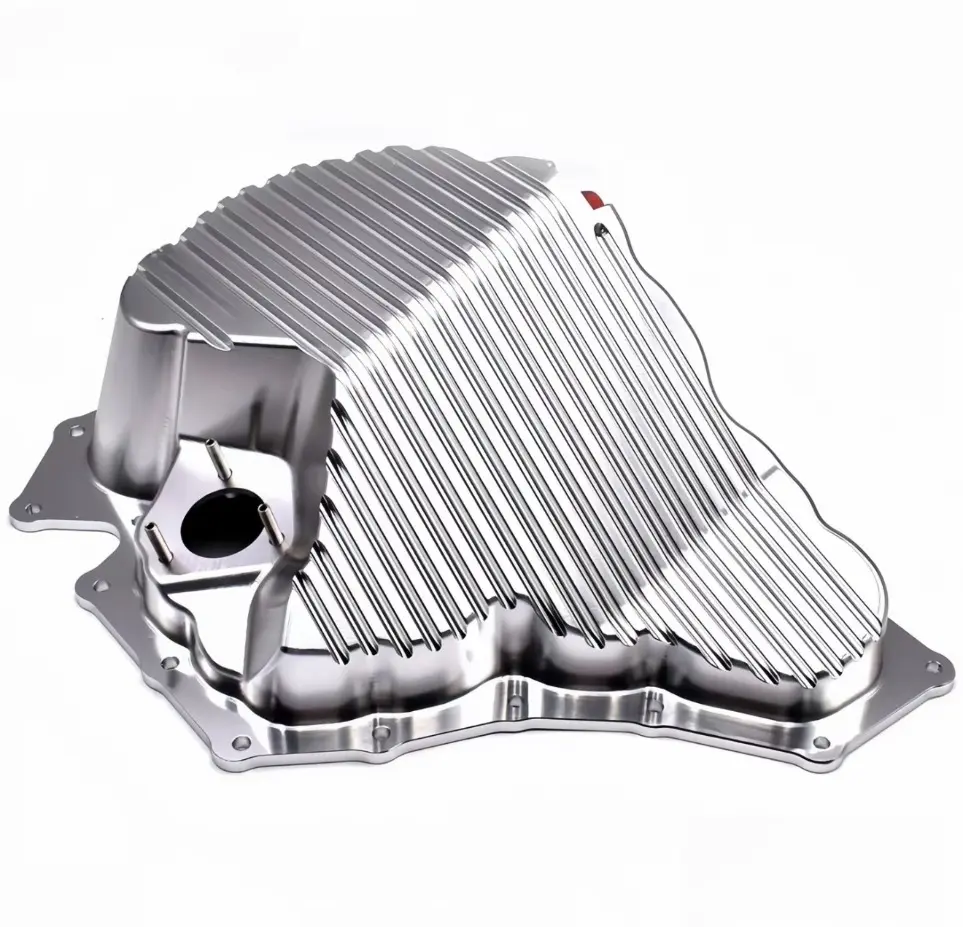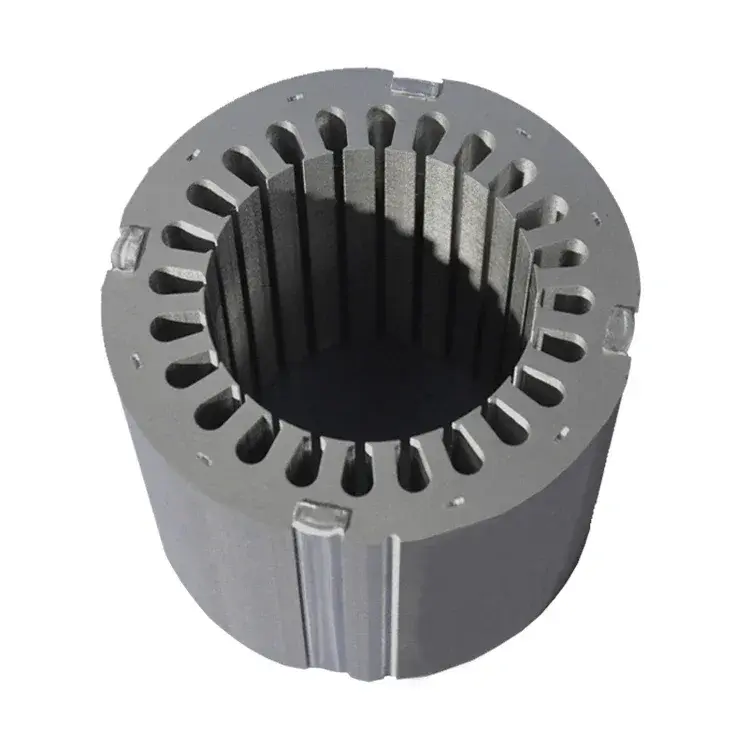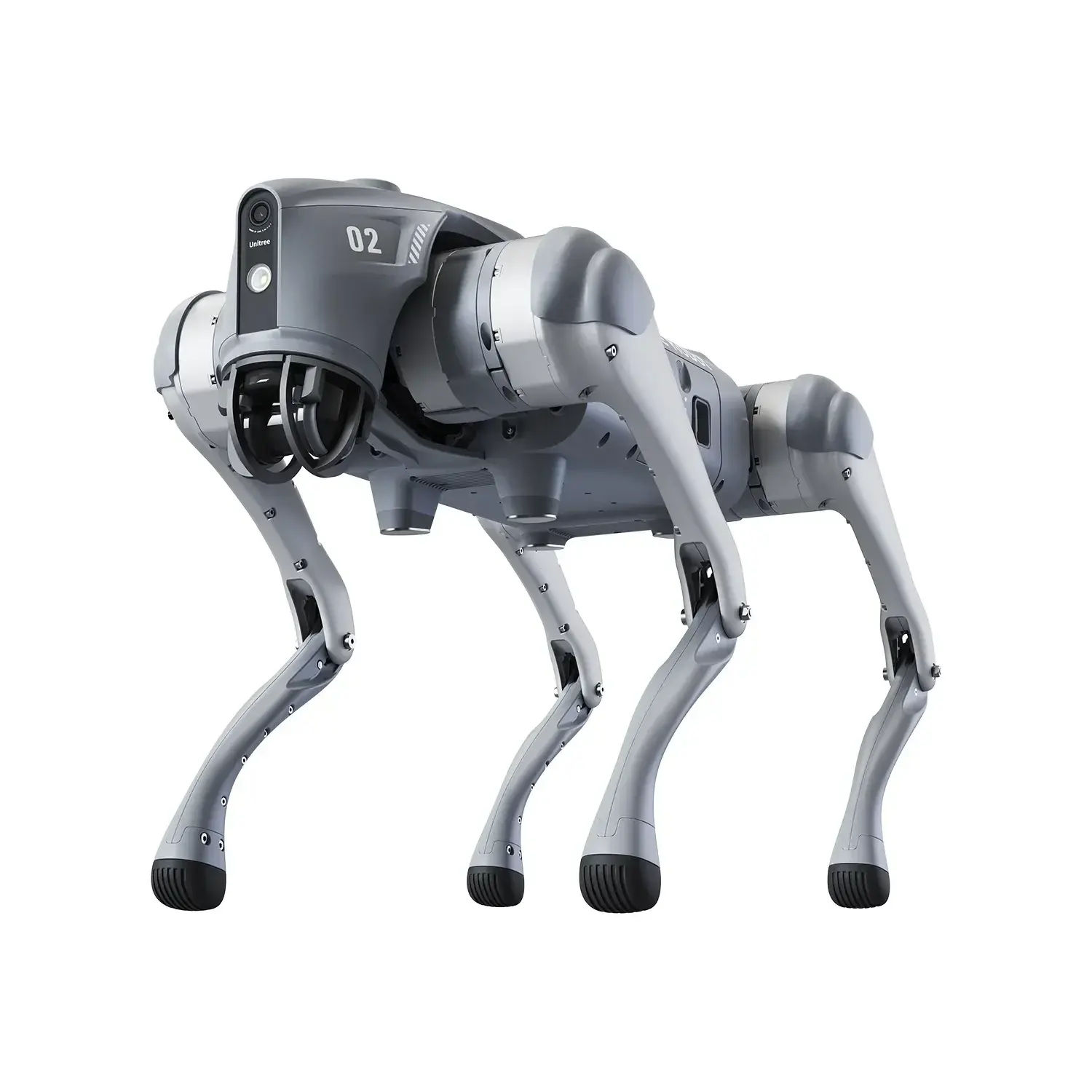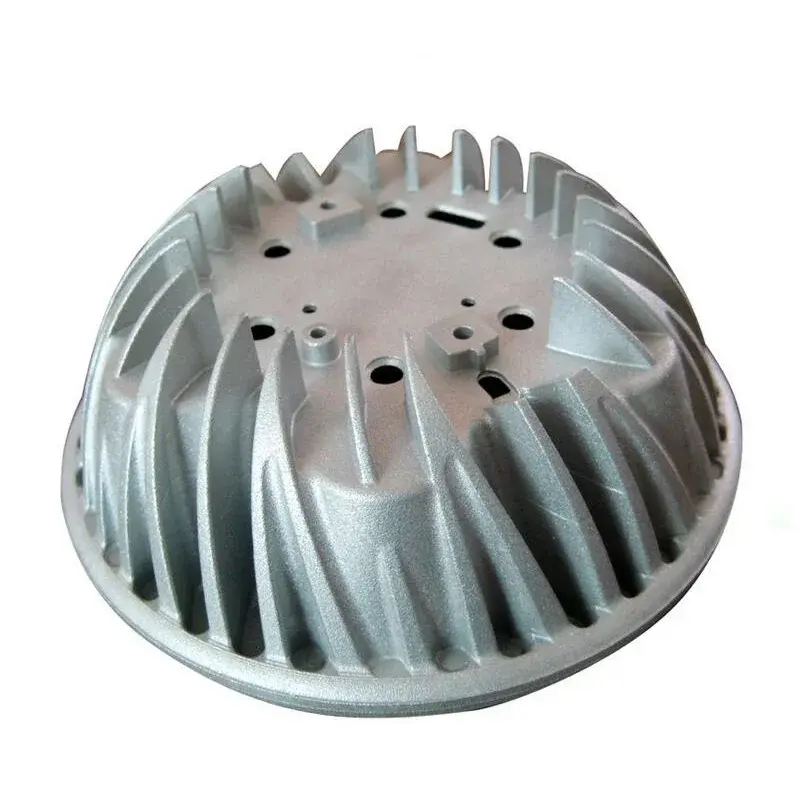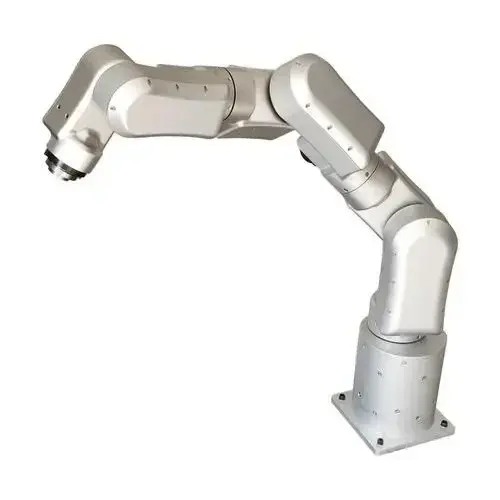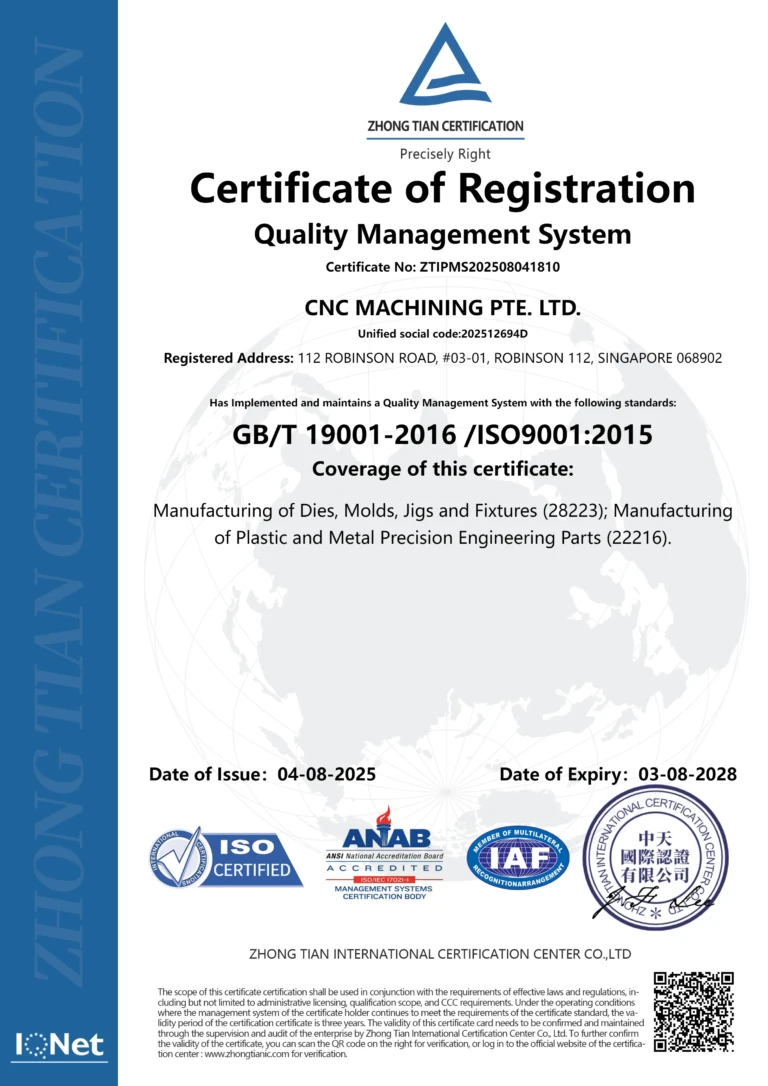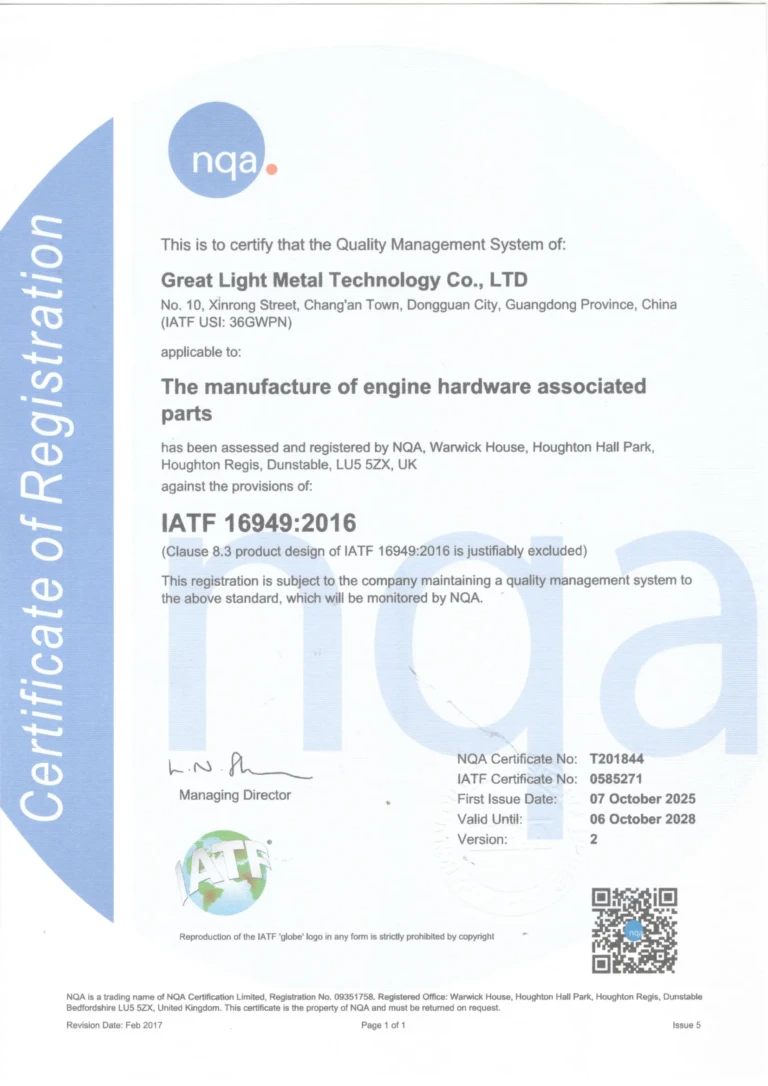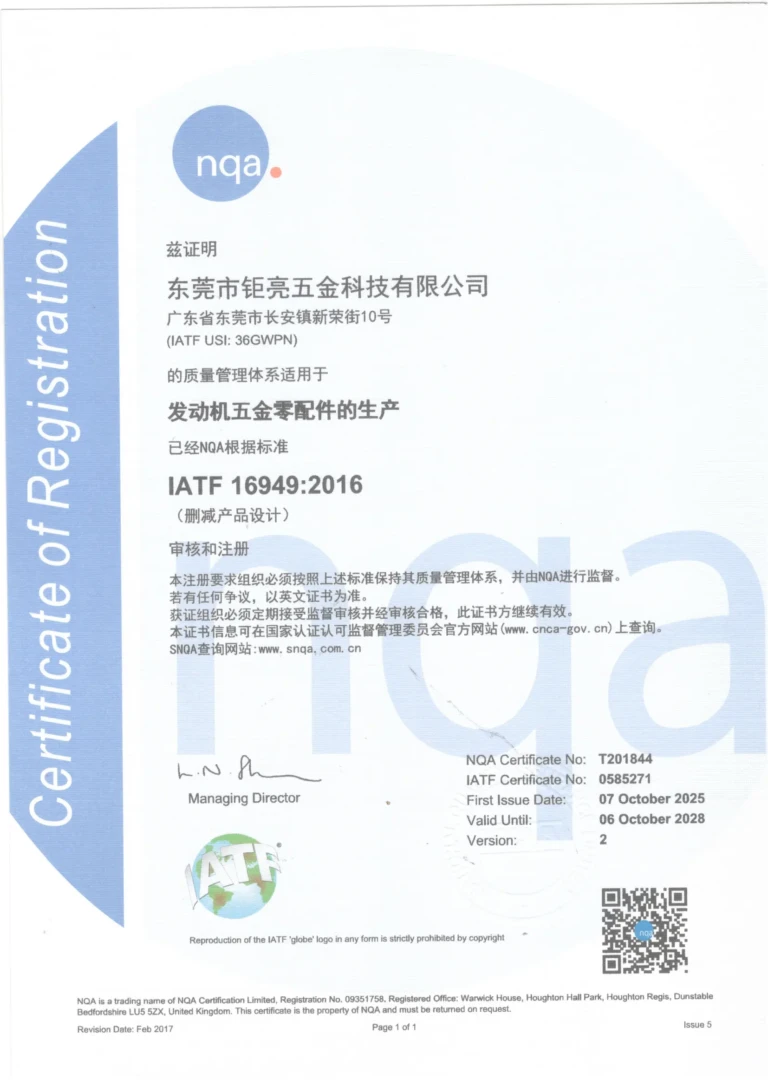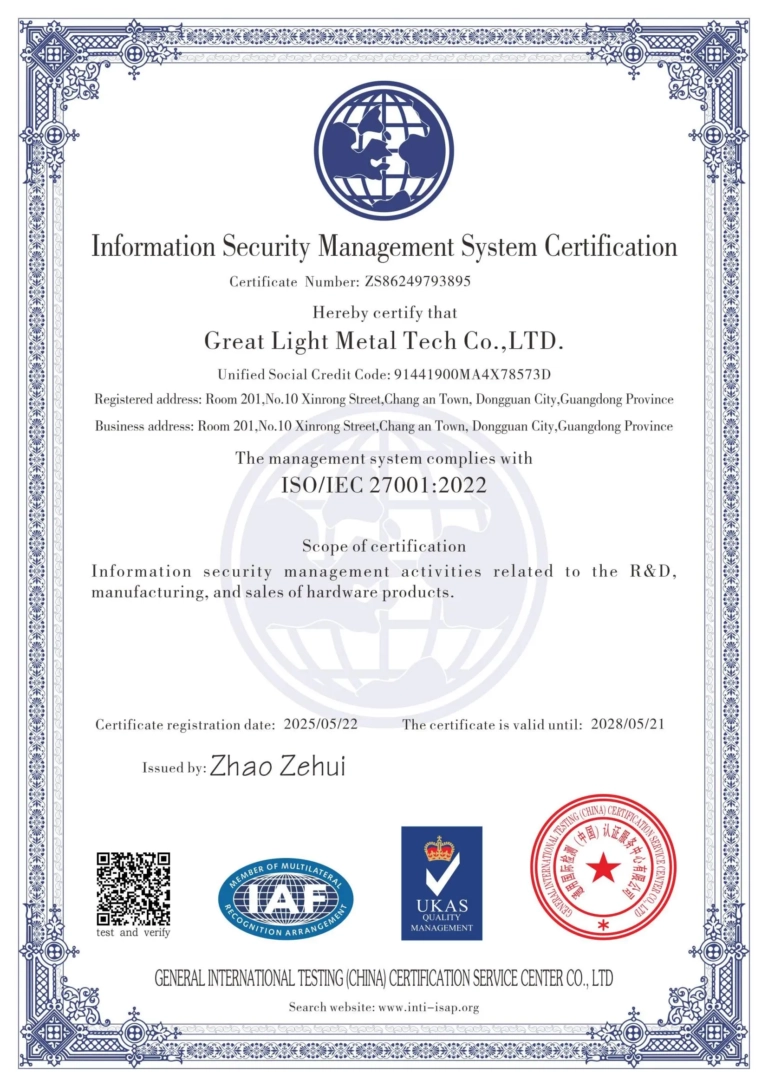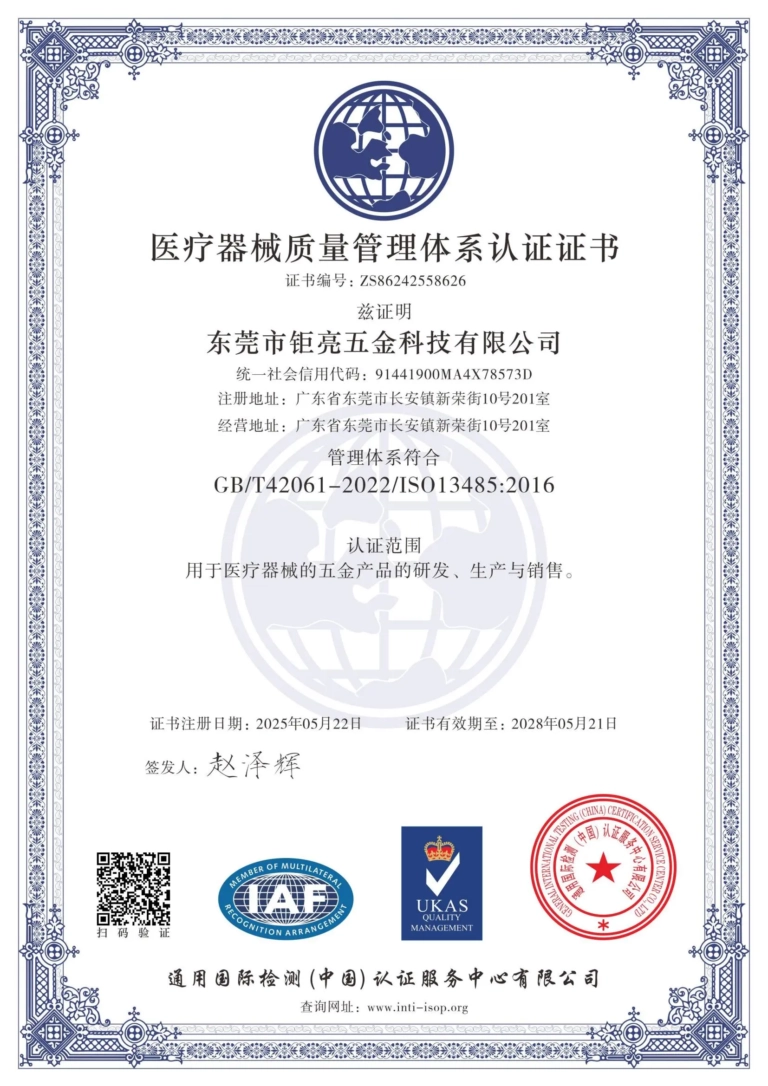In CNC Prototype Sheet Metal Parts, surface treatment is not only a crucial step in enhancing the aesthetics of parts, but also a key step in improving their functionality (such as corrosion resistance, wear resistance, and conductivity). This article will systematically introduce the characteristics, applicable scenarios, and technical parameters of various surface treatment processes to help you make informed choices.
Introduction to Surface Treatment for CNC Prototype Sheet Metal Parts
In the realms of rapid prototyping and manufacturing, the journey of a part does not end when it is cut or machined. The final, and often most critical, step is the application of a surface treatment. This process is a pivotal intersection of science and art, transforming a raw, functional piece into a refined product that meets stringent requirements for durability, appearance, and performance. For engineers, designers, and procurement specialists working with CNC machined prototypes and sheet metal fabrications, understanding the vast landscape of surface finishes is not merely beneficial—it is essential for success. This comprehensive guide delves deep into every major surface treatment, offering unique insights and authoritative analysis to empower you to make perfectly informed decisions, ensuring your parts perform flawlessly and look exceptional in their intended application.
The Critical Role of Surface Finishing in Modern Manufacturing
Surface treatment is far more than a cosmetic afterthought. It is a fundamental engineering decision that impacts a component’s entire lifecycle. The right finish can be the difference between a prototype that validates a design and one that validates a product. It can transform a sheet metal enclosure from a simple box into a robust, long-lasting asset. The primary functions of surface treatments can be categorized into several key areas:
Enhanced Corrosion Resistance
Metals, by their nature, are susceptible to environmental degradation. Oxidation, or rust, in ferrous metals, can compromise structural integrity and lead to part failure. Treatments like anodizing, powder coating, and chromate conversion coating create a protective barrier that shields the base metal from moisture, salt, and other corrosive agents, significantly extending the part’s service life.
Improved Wear Resistance and Durability
Components that experience friction, abrasion, or repeated handling require a hardened surface. Processes such as hard anodizing (Type III) and electroless nickel plating dramatically increase the surface hardness of the part, making it resistant to scratching, galling, and wear, which is crucial for moving parts, tools, and high-traffic surfaces.
Aesthetic and Branding Enhancement
The visual and tactile qualities of a product define the user’s perception. A high-quality finish conveys professionalism, quality, and attention to detail. Finishes like glossy anodizing, mirror polishing, and textured bead blasting allow for brand colors, specific sheens (matte, semi-gloss, gloss), and unique tactile experiences to be incorporated directly into the design.
Modification of Surface Properties
Some treatments alter the fundamental properties of the surface. Anodizing on aluminum is an excellent electrical insulator, while chromate conversion coatings maintain conductivity. Coatings can also affect solderability, adhesion for paints, and light reflectivity, as seen in black oxide treatments that minimize glare.
Understanding Surface Roughness (Ra)
Before diving into specific processes, it is imperative to understand Surface Roughness, commonly measured as Ra (Arithmetic Average). Ra is a quantitative calculation of the relative smoothness of a surface profile. Measured in micrometers (µm) or microinches (µin), a lower Ra value indicates a smoother surface. This metric is a critical specification for both functional performance (e.g., reducing friction, improving sealing) and aesthetic quality. Throughout this guide, we will reference Ra values to provide a clear, objective standard for each finish.
CNC Prototype Parts: Surface Treatment Options
CNC machined parts, typically from blocks of metal, start with a distinct surface texture left by the cutting tool. The chosen surface treatment works with or alters this base condition. The following sections provide an exhaustive breakdown of the options available for CNC prototypes.
As Machined Finish: The Baseline for CNC Parts
The As Machined finish is the most straightforward and cost-effective option, representing the part’s state directly from the CNC machine.

- Process: After machining, the part undergoes a deburring process where sharp edges and corners are carefully chamfered for safe handling. No further processing is applied.
- Surface Characteristics: The surface clearly exhibits the tool paths from the machining process, with a characteristic “tooled” look. The roughness typically measures Ra 3.2µm (Ra 126µin).
- Ideal Use Cases: Perfect for functional prototypes where form and fit are being tested, but aesthetics are not a priority. It is also suitable for internal components and non-critical structural parts where cost-saving is paramount.
- Unique Insight: While often considered a “no-finish” finish, specifying a maximum Ra value (e.g., Ra 3.2) and a chamfer on all sharp edges is crucial to ensure a consistent and safe part from your manufacturer.
Smooth Machining: Refining the Base Material
Smooth Machining is a refined version of the as-machined finish, offering a noticeable improvement in surface quality without entering the realm of manual finishing.

- Process: This is achieved entirely through CNC programming and tooling optimization. It involves using a lower feed rate, sharper cutting tools, and potentially a finer step-over between tool paths. Crucially, no hand polishing is applied.
- Surface Characteristics: The machine marks (tool lines) are still visible but are less pronounced and deeper than the standard as-machined finish. The surface roughness is improved to approximately Ra 1.6µm (Ra 63µin).
- Ideal Use Cases: An excellent choice for parts that require a cleaner, more professional look than “as-machined” but do not justify the cost of polishing or blasting. It’s a pragmatic balance between cost and appearance for functional prototypes that may be demonstrated to stakeholders.
- Unique Insight: Smooth machining demonstrates the capability of modern CNC equipment. It is a testament to how strategic machining parameters can yield a superior surface straight from the machine, reducing or eliminating the need for secondary operations and saving time.
Fine Machining: The Pinnacle of Machined Surfaces
When a near-flawless machined surface is required, Fine Machining represents the highest standard achievable directly through the machining process itself.

- Process: This finish is the result of a combination of high-precision CNC machines, very low feed rates, exceptionally sharp and specialized tools (often diamond-tipped), and optimized cooling. It is a process that prioritizes surface perfection over speed.
- Surface Characteristics: The machining marks are very fine and barely visible to the naked eye, presenting a uniform, precise, and high-quality appearance. The surface roughness is significantly reduced to about Ra 0.8µm (Ra 32µin).
- Ideal Use Cases: Ideal for high-end components where a pristine, precision-engineered look is desired without a reflective polish. Common in aerospace, medical device prototypes, and luxury consumer products where the integrity of the machined surface must be maintained.
- Unique Insight: Fine machining is often a more technically demanding process than a manual polish, as it requires no secondary labor and guarantees dimensional integrity. It is the preferred method for parts with critical tolerances that could be altered by a manual finishing process.
Polishing: Creating a Reflective, Smooth Surface
Polishing is a manual or semi-automated abrasive process that transforms a machined surface into a smooth, reflective one.

- Process: Technicians polish the part by hand in multiple directions using progressively finer abrasive compounds and wheels. This process physically cuts down the peaks of the surface profile, leveling it to a high degree of smoothness.
- Surface Characteristics: The result is a smooth surface with a distinct, slightly reflective sheen. While it shares a similar Ra value (Ra 0.8µm / Ra 32µin) with fine machining, the visual effect is different; polishing creates a more organic, lustrous finish compared to the precise, uniform look of fine machining.
- Ideal Use Cases: Used for cosmetic components, decorative elements, and parts that require easy cleanability, such as those used in food processing or medical applications. Also common for mold cavities.
- Unique Insight: A significant consideration with polishing is that it can slightly alter critical dimensions by removing material. For this reason, it is not recommended for parts with very tight tolerances on finished surfaces. Communication with your manufacturing partner about critical dimensions is essential.
Brushed Finish: The Art of Directional Texture
The Brushed finish, also known as a satin finish, introduces a consistent, directional grain to the metal surface, effectively masking underlying machine marks.

- Process: This is achieved by manually or mechanically abrading the surface with specific grit sandpapers, typically in the #400 to #600 range. The sanding is performed in a single, consistent direction to create the characteristic linear grain.
- Surface Characteristics: The finish presents a uniform, non-reflective, textured appearance that is both visually appealing and effective at hiding fingerprints and minor scratches. The roughness is typically around Ra 1.2µm (Ra 47µin).
- Ideal Use Cases: Extremely popular for consumer electronics (e.g., laptop casings, appliance trim), architectural metalwork, and any application where a sophisticated, non-glare metallic appearance is desired. It is ideal for slightly reducing surface roughness while adding a distinct aesthetic.
- Unique Insight: The direction of the brush is a critical design specification. A vertical brush can make a part appear taller, while a horizontal brush can make it appear wider. This subtle detail can be used as a powerful design tool to influence the product’s visual perception.
Bead Blasting: A Uniform Matte Texture
Bead Blasting is a process that creates a consistent, non-directional matte surface by propelling fine glass beads at the part under high pressure.

- Process: The part is placed in a blast cabinet, where it is bombarded with spherical glass beads. This process peens the surface, rounding off the sharp peaks of the machining marks and creating millions of tiny, uniform indentations.
- Surface Characteristics: The result is a smooth, grainy, and entirely matte texture. It provides excellent visual uniformity and a pleasant, non-slippery tactile feel. It effectively eliminates all visible tool marks, creating a clean, neutral canvas.
- Ideal Use Cases: Serves as an excellent pre-treatment for subsequent coatings like anodizing or painting, as it provides a perfect key for adhesion. As a final finish, it is widely used for machine interfaces, enclosures, and tools where a non-reflective, professional look is required.
- Unique Insight: Bead blasting is exceptional at hiding surface imperfections and inconsistencies from prior machining operations. It is one of the most effective ways to achieve a homogenous appearance across a complex part or multiple parts in an assembly, ensuring visual consistency.
Advanced Functional Coatings for CNC Machined Parts
Moving beyond purely mechanical finishing processes, we enter the realm of advanced coatings and chemical conversions. These treatments fundamentally alter the surface chemistry of the part, adding new properties that the base material lacks. These are critical for enhancing performance in demanding environments.
Powder Coating: The Durable, Versatile Shield
Powder coating is a dry finishing process that has become enormously popular due to its exceptional durability, environmental advantages, and vast aesthetic possibilities.
- Process: A thermoset polymer powder (e.g., epoxy, polyester, polyurethane) is electrostatically charged and sprayed onto the grounded part. The part is then transferred to a curing oven, where the heat causes the powder to melt, flow, and chemically cross-link to form a hard, continuous film.
- Surface Characteristics: The result is a thick, uniform, and highly consistent coating. It is available in an almost limitless range of colors, textures (matte, gloss, wrinkled, metallic), and even special effects. The coating is typically 2-5 mils (50-130 µm) thick, which must be considered for dimensional tolerances.
- Functional Benefits: Powder coating provides outstanding resistance to impact, abrasion, chemicals, and UV radiation (depending on the resin type). It is significantly more durable than liquid paints and is highly chip-resistant.
- Ideal Use Cases: Excellent for consumer products, automotive components, outdoor equipment, and industrial machinery that require a robust, colorful, and attractive finish. It is compatible with all metal materials.
- Unique Insight: The electrostatic application process means that overspray can be collected and reused, resulting in nearly 100% material utilization and minimal VOC emissions, making it an environmentally friendly choice compared to traditional painting.
Black Oxide: The Classic Conversion Coating for Steel
Black oxide, often called blackening, is a chemical conversion coating specifically for ferrous metals (steel and stainless steel). It is not a deposited coating but a surface transformation.
- Process: The steel part is immersed in a series of hot, alkaline aqueous solutions containing oxidizing salts. These chemicals react with the iron on the surface to form a magnetite (Fe₃O₄) layer.
- Surface Characteristics: The process creates a deep black, matte surface that is integral to the metal and does not chip, peel, or rub off. The coating is very thin, typically only 0.5 to 1.5 microns, meaning it has a negligible impact on part dimensions.
- Functional Benefits: The primary benefits are mild corrosion resistance (often enhanced with a supplementary oil or wax post-treatment) and a significant reduction in light reflection, eliminating glare.
- Ideal Use Cases: Ideal for tools, fasteners, firearms, gears, and any mechanical component where dimensional stability is critical and a low-glare, non-reflective black surface is desired. Critical Note: Aluminum cannot undergo a true black oxide process; attempts to “blacken” aluminum use different, often inferior, dyes.
- Unique Insight: Because the black oxide coating is so thin, it offers minimal corrosion protection on its own. The secondary sealant (oil or wax) is not optional; it is an essential part of the process that fills the micro-porosity of the magnetite layer, providing the actual barrier against moisture.
Electroless Nickel Plating: Uniform Protection Without Electricity
Electroless Nickel Plating (ENP) is an autocatalytic chemical process that deposits a nickel-phosphorus alloy onto a substrate without using electrical current.

-
- Process: The part is meticulously cleaned and then immersed in a heated bath containing a solution of nickel ions and a reducing agent. A chemical reaction causes the nickel to deposit uniformly onto the catalyzed surface. The phosphorus content can be controlled (low, mid, or high) to tailor the properties.
- Surface Characteristics: ENP produces a hard, semi-bright to matte gray finish. Its most remarkable feature is its exceptional thickness uniformity, even on complex geometries, deep recesses, and internal surfaces that are impossible to plate evenly with electroplating.
- Functional Benefits: The coating provides excellent corrosion and wear resistance. It also offers high lubricity and is non-magnetic (with higher phosphorus content). The typical hardness of as-plated ENP is 500-700 HV, which can be increased to over 1000 HV by heat treatment.
- Ideal Use Cases: Perfect for complex components requiring uniform protection, such as valves, pump housings, hydraulic cylinders, and tooling. It is not typically recommended for purely cosmetic parts, as it can be prone to subtle staining over time.
Unique Insight: The uniformity of electroless nickel makes it invaluable for plating parts with intricate internal passageways or threads, ensuring consistent performance and corrosion protection throughout the entire component, not just on the external surfaces.
Chromate Conversion Coating: Protecting and Preserving Conductivity
Also known by trade names like Alodine® or Iridite®, chromate conversion coating is primarily used on aluminum and zinc to enhance corrosion resistance while maintaining other key properties.
- Process: The part is immersed in a acidic chemical bath containing chromium compounds. This creates a gel-like film containing trivalent and hexavalent chromium that forms a strong bond with the base metal.
- Surface Characteristics: The coating is extremely thin (0.01 to 0.1 µm) and transparent, though it can be dyed in various colors (most commonly iridescent gold, clear, or olive drab). It has a negligible impact on dimensions.
- Functional Benefits: It provides good corrosion resistance and, most importantly, acts as an excellent primer for paint adhesion. A key advantage is that it does not significantly alter the electrical conductivity of the part, making it ideal for electronic enclosures and RF shielding.
- Ideal Use Cases: The go-to finish for aluminum components in the aerospace, electronics, and telecommunications industries where electrical grounding or signal shielding is required. It is RoHS compliant when using modern, hexavalent-chromium-free formulations.
- Unique Insight: The chromate coating is a “sacrificial” layer. If the coating is scratched, the chromates within the film slowly leach out and “heal” the damaged area by repassivating the exposed aluminum, providing ongoing protection that other thin films cannot offer.
Anodizing: The Definitive Guide for Aluminum Parts
Anodizing is an electrochemical process that converts the metal surface into a durable, corrosion-resistant, anodic oxide finish. It is the most common and important finish for aluminum. Understanding its types and permutations is crucial.
The Fundamental Science of Anodizing
Anodizing works by using the aluminum part as the anode in an acidic electrolyte bath. When an electrical current is applied, oxygen ions from the electrolyte react with the aluminum atoms at the surface, growing a layer of aluminum oxide directly from the base metal. This layer is integral, porous, and highly ordered.
- Integral Growth: Unlike paint or plating, which sit on top of the surface, the anodic layer grows inward and outward from the original aluminum substrate. About 50% of the coating grows above the original surface, and 50% penetrates below it.
- Porous Structure: The freshly anodized layer is a honeycomb structure filled with microscopic pores. This is what allows for dyeing.
- Sealing: After dyeing (or left clear), the part is “sealed” in hot water or a chemical sealant. This process hydrates the oxide, causing it to swell and permanently close the pores, locking in the dye and maximizing corrosion resistance.
Anodizing Type II: The Standard for Decorative and General Purpose Use
Type II anodizing, also known as conventional or sulfuric acid anodizing, is the workhorse of the anodizing world, balancing performance, color options, and cost.
- Process: Conducted in a sulfuric acid bath at room temperature or slightly below. It produces coatings ranging from 1.8 to 25 microns (0.00007″ to 0.001″) thick.
- Properties: Provides excellent corrosion resistance and good wear resistance. The surface is an electrical insulator. It is highly receptive to dyes, allowing for a full spectrum of colors.
- Ideal Use Cases: The standard for consumer products, architectural trim, automotive components, and any application requiring a durable, colored finish on aluminum.
Combination Finishes with Type II Anodizing
The final appearance of a Type II anodized part is profoundly influenced by the mechanical finish applied before anodizing.

As Machined + Anodized Type II
- Description: The part is anodized directly after CNC machining, with no intermediate mechanical finishing.
- Result: The anodic layer will faithfully replicate the underlying “as machined” surface, including all tool marks. The color will be uniform but will have a textured, industrial appearance.
- Ideal Use Cases: The most cost-effective anodizing option. Perfect for non-cosmetic, functional parts where corrosion and wear resistance are needed, but appearance is secondary (e.g., internal brackets, heat sinks, mechanical linkages).

Bead Blasted + Anodized Type II (Matte)
- Description: The part is first bead blasted to create a uniform matte texture, then anodized.
- Result: A consistent, non-reflective, matte finish in the chosen color. This combination is excellent at hiding fingerprints and minor surface imperfections.
- Ideal Use Cases: Highly popular for electronic enclosures, professional equipment, and any product requiring a sophisticated, low-glare aesthetic. It provides a velvety, premium feel.

Bead Blasted + Anodized Type II (Glossy)
- Description: The part is bead blasted and then undergoes a “bright dip” process before anodizing. Bright dipping is a chemical polishing step that dissolves a thin layer of aluminum, creating a highly reflective, mirror-like base.
- Result: A high-gloss, brilliant, and reflective colored finish. The bead blasting provides a uniform substrate that allows for a deep, consistent gloss without polishing marks.
- Ideal Use Cases: For high-visibility cosmetic parts where a bright, shiny, and vibrant appearance is critical. Common in automotive trim, consumer electronics, and decorative hardware.
Brushed + Anodized Type II (Glossy)
- Description: The part is first hand-brushed with fine sandpaper to create a directional grain, then bright dipped and anodized.
- Result: A glossy finish that clearly shows the underlying brushed grain pattern. This creates a dynamic visual effect where the reflectivity and color change with the viewing angle.
- Ideal Use Cases: Ideal for achieving a classic, “brushed aluminum” look with the added protection and color options of anodizing. Used extensively in appliance trim, architectural panels, and high-end audio/video equipment.
Anodizing Type III (Hardcoat): The Ultimate in Surface Durability
When standard Type II anodizing is insufficient for the application’s demands, Type III Anodizing, commonly known as Hardcoat, is the engineered solution. This process creates a significantly thicker and denser oxide layer, prioritizing extreme functional performance over decorative appeal.
- Process: Hardcoating is performed in a sulfuric acid electrolyte similar to Type II, but at much lower temperatures (often near 32°F / 0°C) and higher current densities. These aggressive parameters force the rapid growth of a thick, dense aluminum oxide layer.
- Coating Characteristics: The resulting coating is exceptionally thick, typically ranging from 25 to 75 microns (0.001″ to 0.003″), and can even exceed 100 microns for specialized applications. It has a dark gray to black appearance due to its thickness and is generally left undyed. The surface hardness is remarkable, comparable to case-hardened steel (around 65-70 Rockwell C).
- Functional Benefits:
- Exceptional Wear Resistance: Hardcoat is the benchmark for abrasion resistance in aluminum finishes. It is ideal for parts subject to sliding contact, friction, and particle erosion.
- Enhanced Corrosion Resistance: The great thickness provides a superior barrier against corrosive environments, far exceeding the protection offered by Type II.
- Excellent Dielectric Strength: The thick oxide layer is an effective electrical insulator.
- Ideal Use Cases: Essential for high-wear components such as pistons, gears, valves, hydraulic components, military equipment, and anywhere aluminum must survive in a severe mechanical environment.
- Unique Insight & Critical Consideration: The significant thickness of Hardcoat has a major impact on part dimensions. The rule of thumb is that the final part will grow by approximately 50% of the total coating thickness. For example, a 50 micron (0.002″) hardcoat will consume 25 microns of the base aluminum and add 25 microns to the external dimension. This must be accounted for in the machining tolerances of critical features like bearing fits and threads, which often need to be masked or post-machined.
Brushed + Electropolished: The Ultimate in Micro-Smoothness
This combination finish represents the pinnacle of achieving a clean, smooth, and hygienic surface for high-end applications.

- Process: The part is first given a brushed finish to establish a uniform, directional grain and remove major imperfections. It is then subjected to electropolishing, an electrochemical process that is the reverse of plating. The part is immersed in an acidic electrolyte and acts as the anode. Controlled electrical current dissolves microscopic peaks and imperfections from the surface, leveling it at a molecular level.
- Surface Characteristics: The result is a surface with an extremely low micro-roughness, typically achieving Ra 0.8µm (Ra 32µin) or better. It has a bright, clean, and highly reflective appearance, with the underlying brushed grain softened and polished to a smooth, lustrous sheen.
- Functional Benefits:
- Radically Reduced Surface Area: By removing the microscopic “peaks,” electropolishing creates a surface that is less prone to adhesion and is easier to clean and sterilize.
- Deburring: It effectively removes microscopic burrs left from machining.
- Passivation: The process simultaneously passivates the surface, enhancing corrosion resistance.
- Ideal Use Cases: Primarily used in industries where cleanliness and purity are paramount: medical devices, pharmaceutical processing equipment, food and beverage machinery, and high-vacuum components.
- Unique Insight: A common misconception is that electropolishing is a method for achieving a specific macro-level appearance. In reality, it is a micro-finishing process that enhances the underlying mechanical finish. It will make a brushed part look like a “polished brushed” part, but it will not hide deep scratches or tool marks; it amplifies the quality of the pre-existing surface.
Surface Treatment for Sheet Metal Parts: A Distinct Discipline
While the goal of protecting and beautifying metal is the same, surface treatment for sheet metal parts has a different starting point and set of considerations compared to CNC-machined billet. Sheet metal parts are created through additive or formative processes like laser/plasma cutting, bending, stamping, and welding. These processes leave their own unique signatures, such as heat-affected zones (HAZ) on cut edges, bend lines, and potential weld seams, which must be addressed by the finishing process.
Standard Finish (As-Fabricated)
This is the most basic level of finish for a sheet metal part, representing its state after fabrication with only essential safety processing.

- Process: After cutting and bending, all sharp edges and corners are manually broken and deburred to ensure safe handling and assembly. No effort is made to improve the visual appearance of the mill-grade sheet surface or the cut edges.
- Surface Characteristics: The part retains the original mill finish of the sheet metal (which may have minor rolling marks or imperfections) and visible cut edges from laser or plasma cutting. The HAZ on cut edges is typically visible.
- Ideal Use Cases: Enclosures for internal machinery, structural brackets, and any part that will never be visible to the end-user. It is the most economical option.
Bead Blasted Finish for Sheet Metal
Just as with CNC parts, bead blasting is a highly effective way to create a uniform, matte, and visually consistent surface on sheet metal.
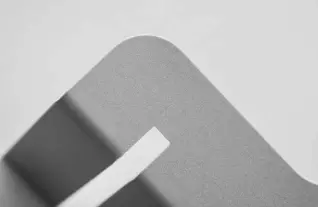
- Process: The entire fabricated part is blasted with glass beads. This process effectively homogenizes the surface, blending the native mill finish with the cut edges and lightly peening the HAZ.
- Surface Characteristics: Results in a uniform, light-gray, matte texture across the entire part. It eliminates the visual disparity between the sheet surface and the cut edges, creating a cohesive and professional look.
- Ideal Use Cases: An excellent preparatory step for painting or powder coating, as it provides an ideal anchor profile. As a final finish, it is perfect for machine panels, industrial enclosures, and parts where a non-reflective, clean appearance is desired.
- Unique Insight: Bead blasting can help relieve minor stresses in the surface of the sheet and is particularly effective at masking scratches and handling marks that occur during the fabrication process.
Brushed Finish for Sheet Metal
This process applies a directional grain to the sheet metal surface, offering both aesthetic improvement and the ability to hide minor imperfections.
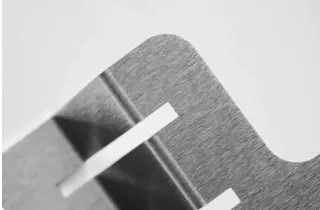
- Process: Technicians use a coarser grit sandpaper (typically #180) compared to CNC brushing, often with power tools, to create a consistent linear grain across the large, flat surfaces of the sheet metal part.
- Surface Characteristics: Creates a pronounced, uniform satin grain. It is more textured than the finer-grit brushed finish on CNC parts, making it effective at hiding the inconsistencies of a mill finish and minor fabrication scratches.
- Ideal Use Cases: Common for interior architectural panels, elevator interiors, appliance sides, and server racks where a cost-effective, attractive metallic finish is needed.
- Unique Insight: The brushing direction is a critical design specification. On a large cabinet, brushing vertically on the doors and horizontally on the body can create a desirable visual contrast and design intent.
Combined Finishes for Sheet Metal
The true power of sheet metal finishing lies in combining a mechanical pre-treatment with a chemical or coating-based final treatment. This two-step approach delivers superior aesthetics and performance.
Brushed + Anodized Type II
This combination leverages the aesthetic of brushing with the protective qualities of anodizing.
- Process: The part is first hand-brushed to achieve the desired grain, then undergoes Type II anodizing.
- Result: The anodic layer seals in the brushed texture, preserving the metallic look while adding color (if dyed) and corrosion resistance. The finish is typically glossy if a bright dip is used, or satin if anodized directly.
- Ideal Use Cases: Ideal for architectural interior elements, consumer product housings, and any application where a durable, decorative metallic finish is required on aluminum sheet metal.

Bead Blasted + Anodized Type II
This is one of the most popular and versatile finishes for aluminum enclosures and panels.
- Process: The part is bead blasted to create a uniform matte substrate and then anodized.
- Result: Produces a consistent, non-reflective, matte finish in the chosen color. This combination is exceptionally good at hiding surface imperfections and weld lines, providing a sleek, modern, and professional appearance.
- Ideal Use Cases: The go-to finish for electronic test equipment, professional audio gear, kiosks, and medical device housings. It provides a velvety, premium feel that is both attractive and functional.

Powder Coated for Sheet Metal
Powder coating is arguably the most common finish for steel sheet metal enclosures and is also widely used on aluminum.

- Process: The fabricated part is cleaned, often pre-treated with a phosphate or chromate coating for enhanced adhesion and corrosion resistance, and then powder coated.
- Result: A thick, durable, and uniform plastic polymer layer available in any color and a wide range of textures.
- Ideal Use Cases: Outdoor equipment, electrical cabinets, automotive frames, furniture, and any product requiring a tough, colorful, and weather-resistant finish. It is particularly advantageous for covering welded and assembled structures.
- Unique Insight: For outdoor or harsh environments, a multi-stage pre-treatment (e.g., cleaning, iron phosphate for steel, chrome phosphate for aluminum) is non-negotiable for ensuring long-term coating adhesion and preventing under-film corrosion.
Specialized Sheet Metal Treatments for Steel and Aluminum
Completing our exploration of sheet metal finishes, we turn to two critical chemical conversion coatings that serve distinct, high-performance roles, particularly in specialized industries.
Black Oxide for Sheet Metal
As with CNC parts, the black oxide process is a vital finish for steel sheet metal components, offering a unique combination of functionality and dimensional stability.

- Process: The fully fabricated steel part is immersed in a series of hot, alkaline chemical baths that convert the surface iron into a magnetite (Fe₃O₄) layer.
- Surface Characteristics: Achieves a deep, rich black, matte finish that is integral to the base metal. The coating is exceptionally thin (typically less than 1 micron), preserving all critical dimensions of the bent and fabricated part.
- Functional Benefits:
- Minimal Light Reflection: Excellent for reducing glare on instruments, machine interiors, and optical equipment.
- Mild Corrosion Resistance: Provides a base level of protection, significantly enhanced by a post-treatment oil, wax, or lacquer.
- No Galling: The surface has a slight lubricity that can help with assembly and reduce galling on threaded components.
- Ideal Use Cases: Perfect for steel brackets, frames, fasteners, and mechanisms inside assemblies where a low-glare, non-reflective black surface is required without altering fit. Critical Reminder: This process is not for aluminum components.
- Unique Insight: The aesthetic of black oxide can vary slightly between batches and material grades. For large assemblies requiring multiple parts, it is advisable to have them processed in the same batch to ensure a perfect color match across all components.
Chromate Conversion Coating (Alodine) for Sheet Metal
This finish is the unsung hero of the electronics and aerospace industries, providing protection for aluminum sheet metal where other properties are paramount.

- Process: The aluminum sheet metal part is cleaned and then immersed in a chromate conversion coating bath, forming a complex chromium oxide layer on the surface.
- Surface Characteristics: The coating is ultra-thin and transparent, often with a slight iridescent gold, green, or clear appearance. It does not alter the surface texture or the electrical conductivity of the underlying aluminum.
- Functional Benefits:
- Corrosion Resistance: Provides excellent protection against corrosion for aluminum.
- Electrical Conductivity: Unlike anodizing, it does not insulate, making it ideal for parts that require electrical grounding or RF shielding.
- Paint Adhesion: Serves as a superior pretreatment and primer for paints and powder coats, dramatically improving adhesion.
- Ideal Use Cases: The definitive choice for aluminum electronic enclosures, chassis, and waveguide components where electrical grounding is critical. Also widely used in aerospace structures as a primer for paint systems. Modern formulations are RoHS compliant.
- Unique Insight: The “healing” property of chromate coatings is its standout feature. If the coating is scratched, soluble chromates in the film migrate to the damaged area and repassivate the exposed aluminum, providing a level of self-healing protection that anodizing cannot offer.
Head-to-Head Comparison: A Guide to Surface Treatment Selection
This comparative matrix provides an at-a-glance overview of the key characteristics of the most common surface treatments, enabling rapid initial down-selection.
| Surface Treatment | Primary Materials | Appearance | Corrosion Resistance | Wear Resistance | Dimensional Impact | Cost Factor |
|---|---|---|---|---|---|---|
| As Machined | All | Visible tool marks, industrial | Low | Low | None | Lowest |
| Bead Blasted | All | Uniform matte, grainy | Low (base material) | Low | Negligible | Low |
| Brushed | All | Directional satin grain | Low (base material) | Low | Negligible | Low |
| Powder Coating | All | High-gloss, matte, textured, colored | Very High | High | High (Adds 50-130µm) | Medium |
| Anodizing Type II | Aluminum | Metallic, can be clear or colored | High | Good | Low (Adds 5-25µm) | Low-Medium |
| Anodizing Type III | Aluminum | Matte gray/black | Very High | Exceptional | High (Adds 25-75µm) | High |
| Electroless Nickel | All | Semi-bright, metallic gray | High | Very High | Low (Adds 5-25µm) | Medium-High |
| Black Oxide | Steel/Stainless Steel | Matte black | Medium (with oil) | Low | Negligible | Low |
| Chromate Coating | Aluminum, Zinc | Iridescent, clear/gold | Good | Low | Negligible | Low |
The Ultimate Decision-Making Framework: How to Choose Your Surface Finish
Selecting the optimal finish is a systematic process. Follow this structured framework to navigate the options confidently.
Step 1: Define the Primary Objective
Ask: “What is the single most important job of the finish for this part?”
- A. Corrosion Resistance: Is the part exposed to weather, chemicals, or humid environments? (e.g., outdoor enclosure, fluid-handling component).
- High Priority: Powder Coat, Anodizing (Type II/III), Electroless Nickel.
- B. Wear Resistance / Durability: Will the surface experience friction, abrasion, or frequent handling? (e.g., sliding mechanism, tooling).
- High Priority: Hard Anodizing (Type III), Electroless Nickel, Powder Coat.
- C. Aesthetics / Branding: Is the visual appearance and feel critical to the product? (e.g., consumer device, architectural feature).
- High Priority: Anodizing (Type II with various pre-treatments), Powder Coat, Brushed, Polished.
- D. Electrical Properties: Does the part need to remain electrically conductive or be insulated? (e.g., RF shield, heat sink).
- Conductive: Chromate Coating, Black Oxide (on steel), Bare Metal.
- Insulative: Anodizing, Powder Coat.
- E. Dimensional Stability: Are there critical features (threads, press-fits) that cannot tolerate any build-up?
- High Priority: Black Oxide, Chromate Coating, Bead Blasting, Brushing (all have negligible impact).
Step 2: Evaluate Material and Geometric Constraints
- Material:
- Aluminum: Anodizing is the default choice. Chromate coating for conductivity.
- Steel: Powder coating is the default. Black oxide for a thin, black finish.
- Stainless Steel: Often used in a passivated or electropolished state. Can be bead blasted or brushed.
- Geometry:
- Simple, Exterior Surfaces: Almost any finish is suitable.
- Complex with Deep Recesses & Blind Holes: Electroless Nickel is superior for uniform coverage. Powder coating may struggle with Faraday cage effects, leading to thin corners. Anodizing may have current density issues in deep holes.
Step 3: Consider the Operational Environment
- Indoor, Benign: Aesthetic finishes, light coatings, or even bare metal with a mechanical finish (brushed, blasted) may suffice.
- Outdoor, Weather-Exposed: Requires robust systems. Powder coating with proper pre-treatment, or Type II/III anodizing for aluminum.
- Chemical/Salt Spray Exposure: High-performance anodizing, electroless nickel, or specialized powder coats (e.g., epoxy, fluoropolymers).
- High-Temperature: Many organics (powder coat) have temperature limits. Inorganic finishes like anodizing or high-temperature ceramic coatings are required.
Step 4: Finalize Based on Budget and Lead Time
Once you have a shortlist from Steps 1-3, the final decision often comes down to pragmatism.
- Lowest Cost: As-Machined, Bead Blasted, Brushed.
- Best Value (Performance/Cost): Anodizing Type II, Powder Coating.
- Highest Performance (Regardless of Cost): Hard Anodizing (Type III), Electroless Nickel Plating.
- Lead Time: Simple mechanical finishes are fastest. Processes involving chemical baths (anodizing, plating) have longer cycle times due to batch processing and multiple steps.
Conclusion: From Prototype to Product with Confidence
The journey of a part from a raw block or sheet of metal to a finished component is a testament to modern engineering and manufacturing prowess. Surface treatment is the crucial final step that bridges functional design with real-world application. It is the layer of intelligence applied to the part, granting it properties the base material alone could never possess.
By understanding the science, aesthetics, and practical implications of each process—from the cost-effective simplicity of a bead blast to the formidable protection of a hard anodize—you empower yourself to make decisions that enhance product quality, reliability, and user satisfaction. Use this guide not as a static document, but as a dynamic framework for collaboration with your manufacturing partners. By clearly articulating your performance requirements, environmental challenges, and aesthetic vision, you can consistently select the perfect surface treatment to ensure your CNC and sheet metal parts succeed.
Products that utilize these surface treatment processes:
CNC Turned Parts Manufacturer Georgia
Aerospace Parts CNC Machining Manufacturing
Custom Parts Of A CNC Mill Metal Fabrication


